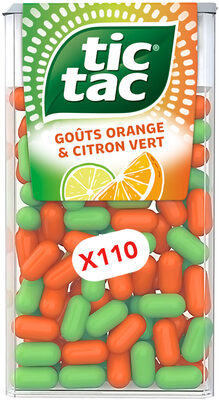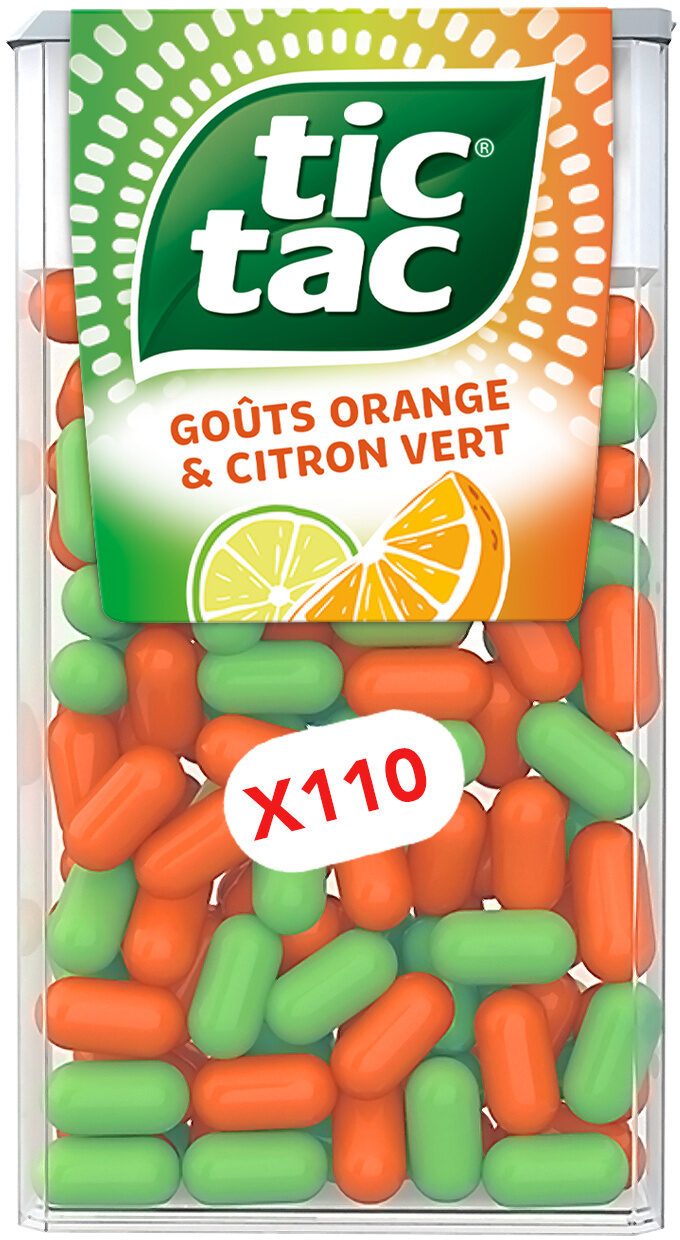Bonbons Tic Tac x110 pastilles ORANGE & CITRON VERT - 54g - Ferrero - 54 g
This product page is not complete. You can help to complete it by editing it and adding more data from the photos we have, or by taking more photos using the app for Android or iPhone/iPad. Thank you!
×
Some of the data for this product has been provided directly by the manufacturer FERRERO FRANCE COMMERCIALE.
Barcode: 8000500166789 (EAN / EAN-13)
Common name: Pastilles goûts citron-citron vert et orange.
Quantity: 54 g
Packaging: Plastic, Blister, Box, fr:Petit Format
Brands: Ferrero, TIC TAC, Mixte
Categories: Snacks, Sweet snacks, Confectioneries, Candies
Labels, certifications, awards:
Green Dot
Stores: Leclerc, Carrefour, carrefour.fr
Countries where sold: France, Switzerland
Matching with your preferences
Environment
Carbon footprint
Packaging
Transportation
Other information
Conservation conditions: A conserver au sec et à l'abri de la chaleur.
Customer service: FERRERO FRANCE COMMERCIALE - Service Consommateurs, CS 90058 - 76136 MONT SAINT AIGNAN Cedex
Report a problem
Data sources
The manufacturer FERRERO FRANCE COMMERCIALE uses Equadis to automatically transmit data and photos for its products.
Product added on by 7ristan
Last edit of product page on by org-ferrero-france-commerciale.
Product page also edited by beniben, driveoff, ecoscore-impact-estimator, ferrero, foodrepo, frank4711, inf, kiliweb, openfoodfacts-contributors, packbot, quechoisir, roboto-app, segundo, tacite, yuka.R0tjZVNLY05oTWNJaWZadW95LzQvSTlYNUs2NFVFVG9HKzRMSWc9PQ, yuka.UVBzUE1ZSmM5dGRWbGZNUHpqSFYydFJVOWE2a1dIMm9GdXNRSWc9PQ, yuka.WWI0ck9vc0lsNmdsZ1BJaStSN2U1dmhuNExXN1hFYXRjTTRJSVE9PQ, yuka.ZFAwL0Q3OG5qZDhRdmM4QytSSEs0KzV1bkxTdWQwanFPdGd3SUE9PQ, yuka.ZWZsUk0vNFpsL1VTdXNNdTN6SFcxZWgwbmJQMFREK0xCK1FYSVE9PQ, yuka.sY2b0xO6T85zoF3NwEKvlmhMA9XGmAPAMQbhyFWRxuu-Dp_6W4pt7qn4Cqs.










